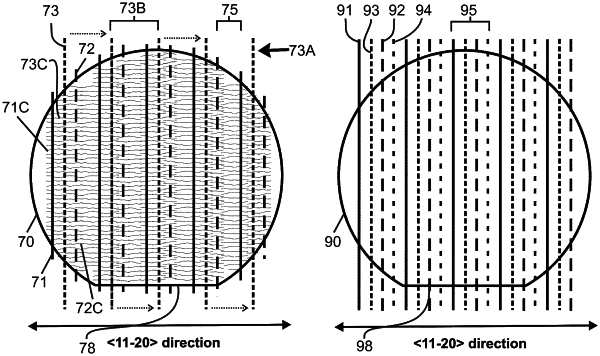| CPC B23K 26/032 (2013.01) [B23K 26/40 (2013.01); B23K 26/53 (2015.10); B28D 5/0064 (2013.01); H01L 21/02686 (2013.01)] | 12 Claims |

|
1. A crystalline material processing method comprising:
supplying emissions of a laser focused along a first average depth position within an interior of a crystalline material of a substrate, and effecting relative lateral movement between the laser and the substrate, to form subsurface laser damage having at least one subsurface laser damage pattern;
following formation of the at least one subsurface laser damage pattern, generating at least one image of a top surface of the substrate;
analyzing the at least one image to identify a condition indicative of presence of uncracked regions in the interior of the substrate; and
responsive to the analyzing, performing at least one of the following steps (i) or (ii):
(i) effecting relative movement between the laser and the substrate while supplying emissions of the laser focused within the interior of the substrate in at least the uncracked regions to form supplemental subsurface laser damage to supplement the at least one subsurface laser damage pattern along or proximate to the first average depth position, for formation of a first reduced thickness portion of the substrate;
(ii) changing an instruction set, associated with the substrate, for forming subsurface laser damage when producing subsurface laser damage patterns at a second average depth position, for formation of at least one additional reduced thickness portion of the substrate.
|